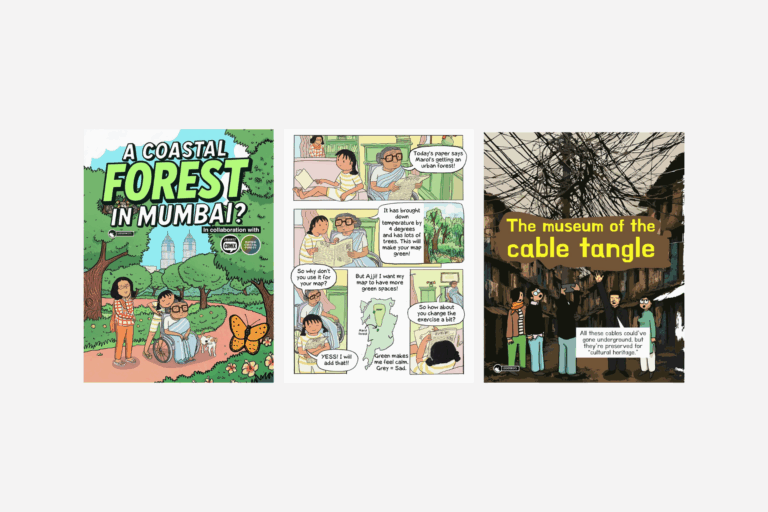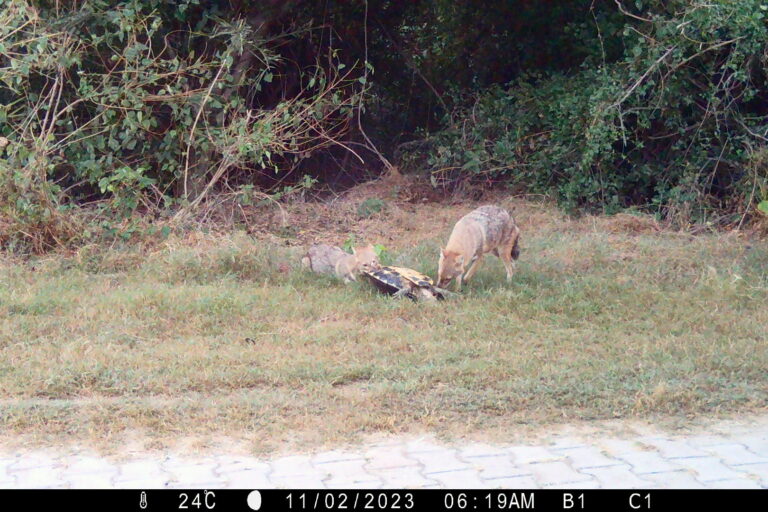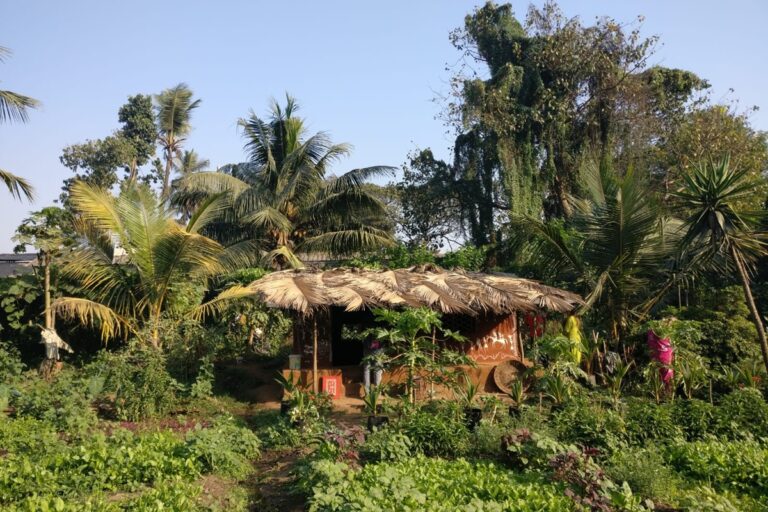- ‘Conservation from the Margins’ is a collection of nine essays that reflect largely ignored realities and complexities of conservation, with a strong overtone of how global economic and geo-political forces are changing the way we view and value nature.
- The scale and the depth of the essays is impressive, the approach fresh and inclusive, writes Prerna Singh Bindra.
- While this book is an absolute must for practitioners of this field, it is even more important for decision-makers so that they may hear the voices of the margnalised and make conservation solutions more inclusive, nuanced.
While on a trip to Palamu (Jharkhand) in October 2010, I visited a hamlet where a leopard had killed a cow the night before. When we reached the spot, there didn’t seem to be anything out of the ordinary. The family had five cows and a few goats, which were corralled, but the fences weren’t very secure. Around midnight, the predator had squeezed in and killed a calf. The loss for a family living off the land, and their livestock, was acute. Yet, in a manner, peculiar and especial to my country, they were calmly philosophical about the cataclysm. If you lived in a jungle, this was par for the course. The forest gave them food, water, medicine, wood, fodder – everything; so occasionally, you had to pay up.
I was astounded, this turned on its head the theory that we took for gospel: That education, literacy, awareness, exposure would increase tolerance, further the cause of conservation.
Palamu is one of the poorest and driest districts of not just of the region, but the country, and few adults here had formal education. I contrasted this with an incident in Sohna, a village relatively more affluent and literate and some three km from my home in Delhi NCR, where a leopard had been beaten and bludgeoned to death in November 2016 for daring to show up.
Were conservation a Facebook status, it would read: It’s (very) complicated.
Talking of conservation as if people mattered
If there is anything I have learnt in my two decades in conservation it is to expect the unexpected, and importantly, that wildlife conservation is not so much about animals, but people.
From this flows the fact that conservation of nature is reflective of the society it is enmeshed in, more so in a country like India: diverse, complex, nuanced, overwhelming, complicated. India is home to endangered, endemic and globally important species that inhabit diverse ecosystems in a densely populated, rapidly growing – and glaringly unequal – economy.
Conservation from the Margins is a collection of nine essays that reflect this largely ignored reality and complexity of conservation, with a strong overtone of how global economic and geo-political forces are changing the way we view and value nature.

The subject seems niche, but the narratives expand our vision, driving home the point that conservation is impacted by, and affects, each one of us in myriad ways. The common understanding of conservation remains uni-dimensional – restricted to one species, usually the charismatic such as tigers or rhinos, and a view that wildlife protection is mainly about locking horns with the ‘bad guys’ like poachers. Wildlife is also boxed in the terrestrial, usually ‘forests’, and clearly defined sanctuaries and national parks.
But who is the ‘bad guy’ when illegally derived venison has cultural connotations – and may be the bride price as per the custom of the Miju Mishmi tribe in Arunachal? Or if wildlife derivatives – be it leopard skin or that of an otter – are used as currency for Horlicks (a malted milk hot drink) or alcohol? Another layer is added by the spiritual element, where boundaries between humans and animals blur, where hunting some creatures is taboo, and another symbolises power? And then, what does it mean for rapidly diminishing wildlife when culture gets corrupted by commerce, when the global market for illegal wildlife trade swoops in to exploit the traditional skill of the hunter and their vulnerability to money and consumption? Has poaching accelerated with modern guns replacing traditional traps?
This subject is skilfully tackled by Ambika Aiyadurai and Nandini Velho in one of the chapters in Conservation in the Margins that highlight species, landscapes and issues largely absent from our consciousness.
Essays that give voice to the marginalised
All essays in the book from India’s varied geographies—seas, deserts, mountains, rain forests, rivers—are bound by one common thread of shining a light on the shadows, of giving voice to the marginalised. The marginalised may be human, animal, landscape, and disadvantaged ethnically, socially, economically, historically. As the editors Nandini Velho and Umesh Srinivasan say “this book is about shrinking ecosystems with endangered wildlife living side-by-side with disfranchised people.”
This is best illustrated through the sorry plight of the Great Indian Bustard, of which fewer than 200 survive. Both the birds and the pastoral nomads have both been usurped and alienated from their own land by an economic system that derides grasslands as wastelands. The development juggernaut that has fuelled infrastructure, industry and even the seemingly green renewable energy has drastically changed traditional land-use and destroyed grasslands.

“The grasslands remain conservation’s blind spot in discourse and policy,” points out Sutirtha Dutta, Bustard Conservation Project Scientist from the Wildlife Institute of India.
The other blind spot is the illegal trade of lesser-known species like pangolins, turtles, and thousands of plant derivatives like red sander (a highly prized timber). Such lesser-known flora and fauna is legally protected, yet in the hierarchy of species they are the invisibles, and the scale of the trade is pushing them into silent extinction. Uttara Mendiratta and Tito Joseph examine how international forces are sucking India’s rare animals into the murky wildlife market.
Even more curious and complex is the case of marine life. Think about it. We view fish, or crabs or octopus simply as food, but it is wildlife threatened by massive over-exploitation. Equally imperilled by the large, unsustainable scales of commercial fishing is the livelihood of millions of artisanal fisherfolk. Use of seas and its resources are governed by a number – and sometimes conflicting – laws and rules, says marine geographer and biologist Divya Karnad, made more complicated with the lack of uniformity in state regulations.
For instance, Odisha has a long period of ban to regulate overfishing, but you could potentially cross over to waters of Andhra Pradesh for your catch. There are issues of overlapping regulatory authorities, poor understanding of marine issues and highly inadequate resources to monitor illegal fishing. Karnad raises the important, but contentious point of how egalitarian fishing societies and their sustainable practices have been eroded by onslaught of industrial fishing which are emptying the seas of their bounty.

Another essay is based in the Sundarbans – the world’s largest mangrove, and the only one with tigers. Its where land, river and sea meet, and where ecological, livelihood and economic issues merge. The mangrove ecosystem holds a wealth of biodiversity, and are fish nurseries, that sustain millions. Sundarbans, and its people, are most vulnerable to climate change, and the authors suggest that one way to halt the rapid destruction of mangroves could potentially lie in its remarkable capacity to sequester carbon through linking its conservation to carbon credit funding.
The protagonist of the riverine ecosystem is the Gangetic dolphin threatened by the building dams like the Farakka Barrage that have blocked river flows, massively reduced fish stocks and disrupted age-old fishing practices. There are other issues like pollution and increasing traffic that endanger the dolphin. But at the heart of the survival of this resilient cetacean are the complex social issues of caste, identities and ownership that shape the fisheries in Ganga. Nachiket Kelkar dissects this complexity deftly, narrating how these traditional structures -and the future of the unique freshwater fauna – is further imperilled by globalisation.
Two of the most interesting chapters are on conservation in areas of internal conflict. I was particularly fascinated to read about Palamu, as I have been fortunate to visit – sporadically and briefly—the dense, diverse forests of the ‘red corridor’, mainly East-Central India impacted by left-wing extremism. The courage of forest staff and rare officials who continue to protect wildlife and forests is impressive, particularly as they are caught between the cross hairs of naxals and security forces. Raza Kazmi forces us to confront the question of how the hunger for natural resources, coupled with feudalism and caste has fuelled the naxal movement. Curiously, the richest, largest contiguous forest of India – and the finest tiger and elephant habitats, are the most ignored. Perhaps because the same forest is equally wealthy in its deposits of iron ore and coal, and fraught with extremism?
While each chapter discusses and debates the problems, possible solutions are also offered. The story of interactions between the herders and snow leopards (and even wild herbivore) is one of cautious hope. The authors trace the conflict and show how this can be minimised and attitudes changes through innovative solutions.

The scale and the depth of the essays are impressive, and the approach fresh and inclusive. The subject is daunting – in keeping with the nature of conservation, but neither dull, nor dense. The narratives are vibrant and surprisingly, and utterly, readable. I would attribute this not just to the skill of the editors, but the authors’ intimate knowledge and years of experience of the geographies and issues they speak of, and the species and landscapes they defend.
While this book is an absolute must for practitioners of this field, it is even more important for decision-makers so that they may hear the voices of the marginalised and make conservation solutions more inclusive, nuanced. The need of the hour is to have more such honest voices from the field that cover the diversity and complexity of conservation; and that they are heard.
The book under review:
Conservation from the Margins. By Umesh Srinivasan and Nandini Velho. Published by Orient Black Swan. Price: Rs 975.
[Prerna Singh Bindra is a conservationist and writer]














